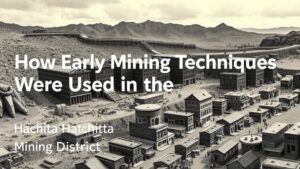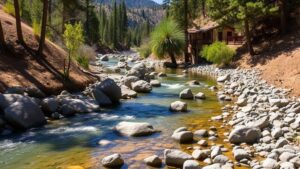How to Dowse for Large Cavities or Underground Structures
How to Dowse for Large Cavities or Underground Structures
Dowsing, often referred to as water witching, is an ancient practice that involves locating underground resources using specific tools, commonly dowsing rods or pendulums. While traditionally associated with locating water, dowsing can also be effectively employed to detect large cavities or underground structures, such as caves, tunnels, or even archaeological sites. This article delves into the techniques, tools, and practical applications of dowsing for detecting underground anomalies.
The Basics of Dowsing
Dowsing relies on the belief that certain individuals possess an intuitive ability to sense disturbances in the earths energy. This concept can be likened to how animals instinctively find their way using earth’s magnetic fields. While scientific studies on the efficacy of dowsing are limited, many practitioners report personal successes.
- Dowsing Tools: Common tools include Y-shaped or L-shaped rods and pendulums.
- Intuition and Sensitivity: Dowsers believe they can tap into subtle changes in energy fields.
Choosing Your Tools
The effectiveness of dowsing largely depends on the tools employed. Here are some popular dowsing tools:
- Dowsing Rods: Typically made of copper or other metals, these rods can pivot freely. When the dowsing rod moves in response to a subterranean feature, its often interpreted as a positive signal.
- Pendulums: A weight suspended from a string that can swing freely. Its movements are believed to correspond with underlying structures or energies.
Understanding Ground Energy
Practitioners believe that everything has an energy signature, and larger structures or cavities can disrupt this energy. This is akin to how water flowing through a pipe creates ripples, affecting the surrounding environment. Understanding the energy dynamics helps dowsers interpret signals more effectively.
- Magnetic Anomalies: Underground structures can alter the local magnetic field, leading to detectable changes.
- Water Sources: While not always the focus, natural water bodies can also impact local geology and energy.
Preparation for Dowsing
Before attempting to dowse, its essential to prepare properly:
- Choose the Right Location: Areas with geological formations known to house large cavities or underground structures are more likely to yield results.
- Clear Your Mind: Many dowsers recommend meditative practices to enhance sensitivity to changes in energy.
The Dowsing Process
The dowsing process can be broken into several crucial steps:
- Establish Your Purpose: Clearly define what you are searching for, whether it be a large cavity or a specific underground structure.
- Walk the Area: Slowly meander through the designated area while holding your chosen tool. Pay attention to any shifts in the tools movement.
- Interpret the Signals: A response from the dowsing tool, such as a sudden movement or a circular motion, can indicate the presence of an underground anomaly.
Real-World Applications
Dowsing for cavities has been utilized in various fields, including archaeology, environmental studies, and construction. Here are some notable examples:
- Archaeological Dowsing: Dowsers have successfully identified potential dig sites in ancient ruins, leading to significant discoveries around the world.
- Environmental Assessments: Dowsing can help locate contamination or underground storage tanks, aiding in environmental remediation efforts.
Addressing Skepticism
While many dowsers swear by the method’s effectiveness, the practice has been met with skepticism within the scientific community. Critics often point to the lack of empirical evidence supporting dowsings reliability. But, it is essential to view dowsing as a supplementary tool rather than a primary method for locating underground features. Dowsing can be particularly effective when combined with geological surveying and traditional exploration techniques.
Conclusion and Actionable Takeaways
While dowsing for large cavities or underground structures remains a controversial practice, it offers a unique approach that some find beneficial. To embark on this journey:
- Understand the tools and techniques involved in dowsing.
- Prepare yourself mentally and physically for a successful experience.
- Remain open-minded and experiment with different geographical locations and techniques.
Incorporating dowsing into your toolkit may expand your ability to detect underground features, but it is advisable to complement it with rigorous scientific methods for the best results.


